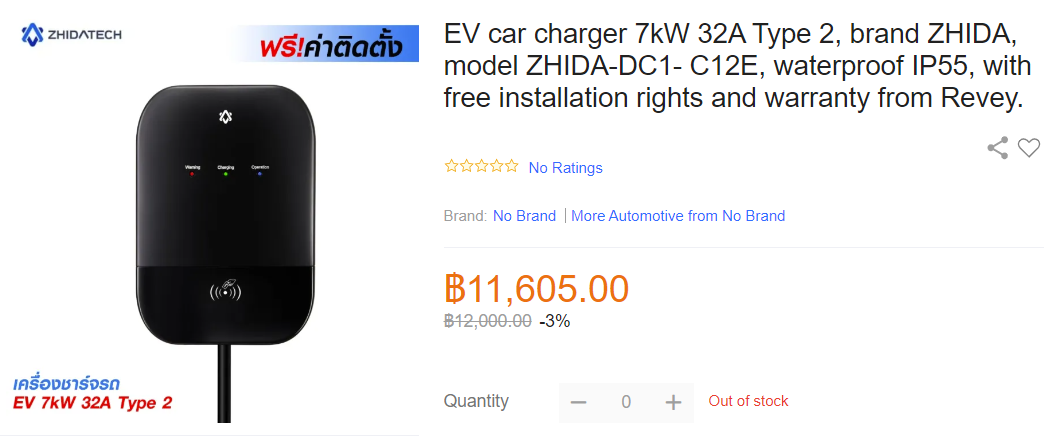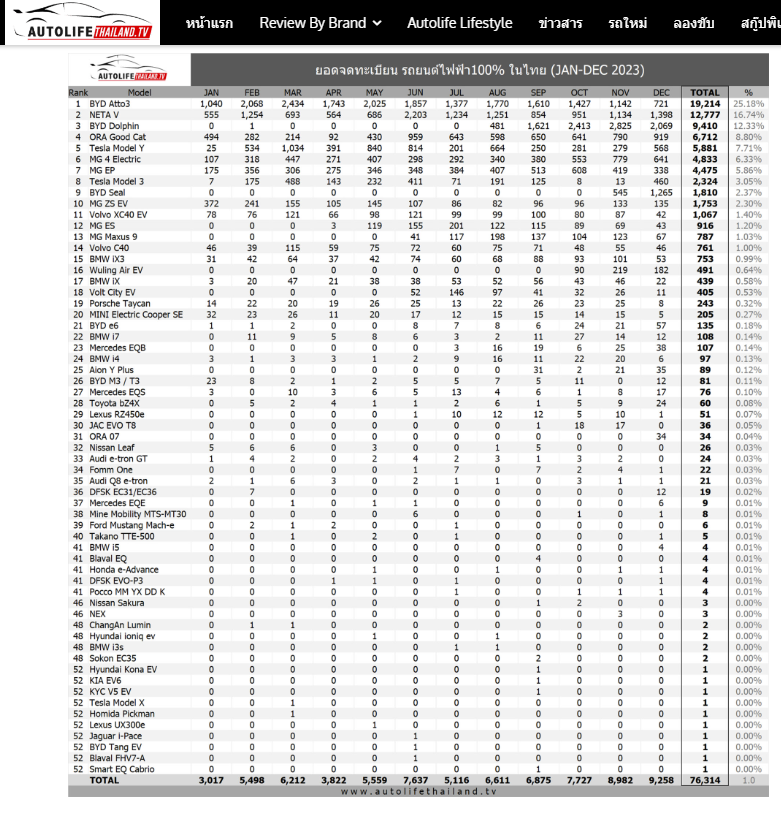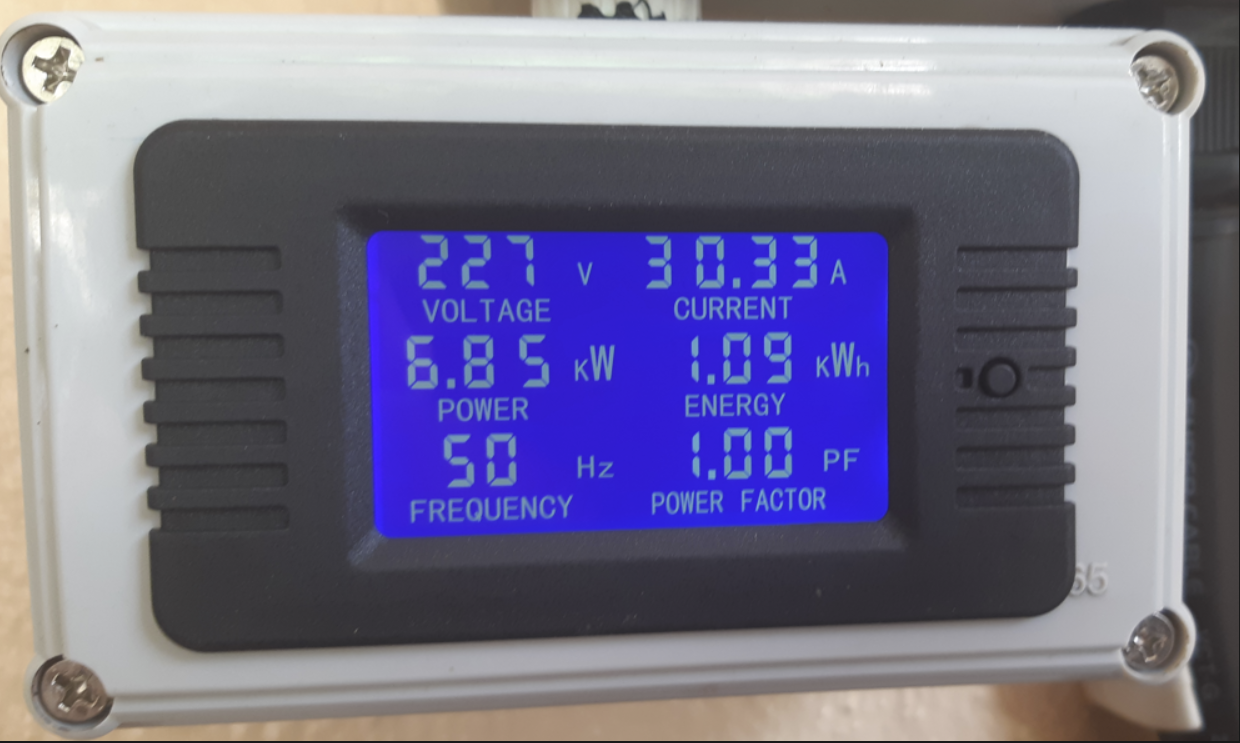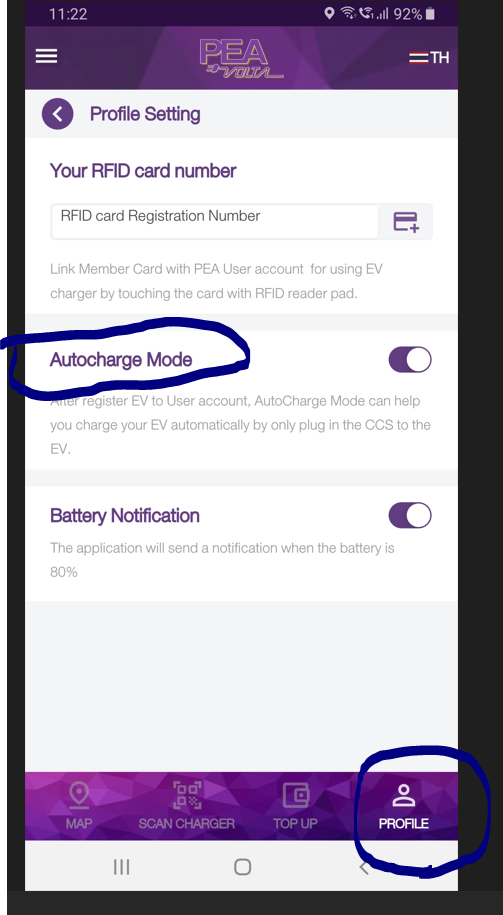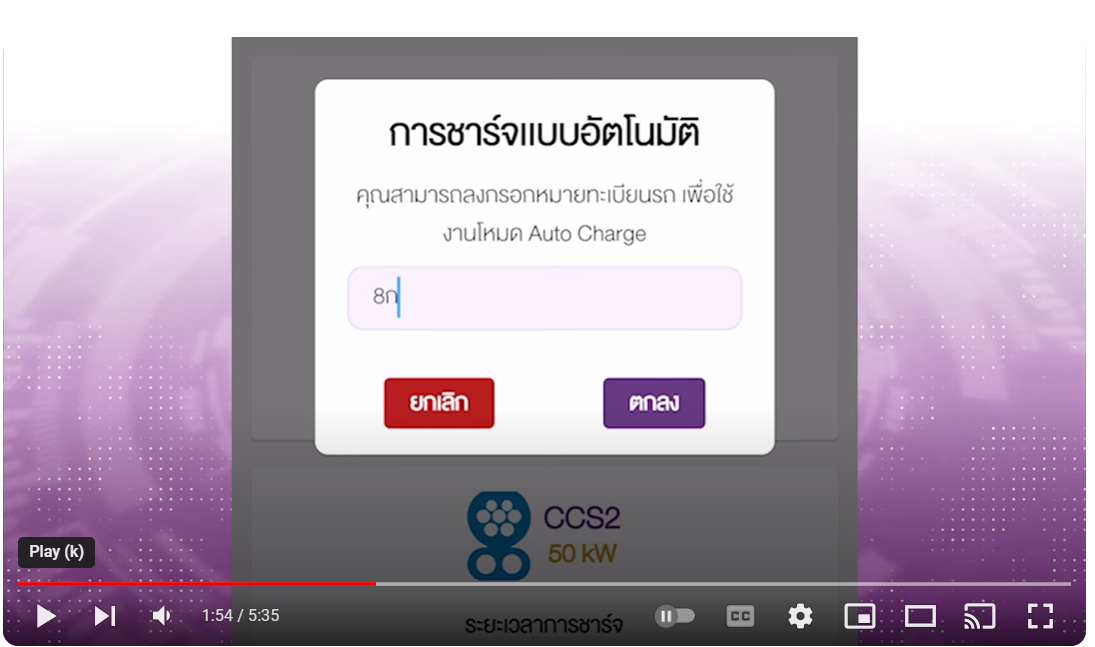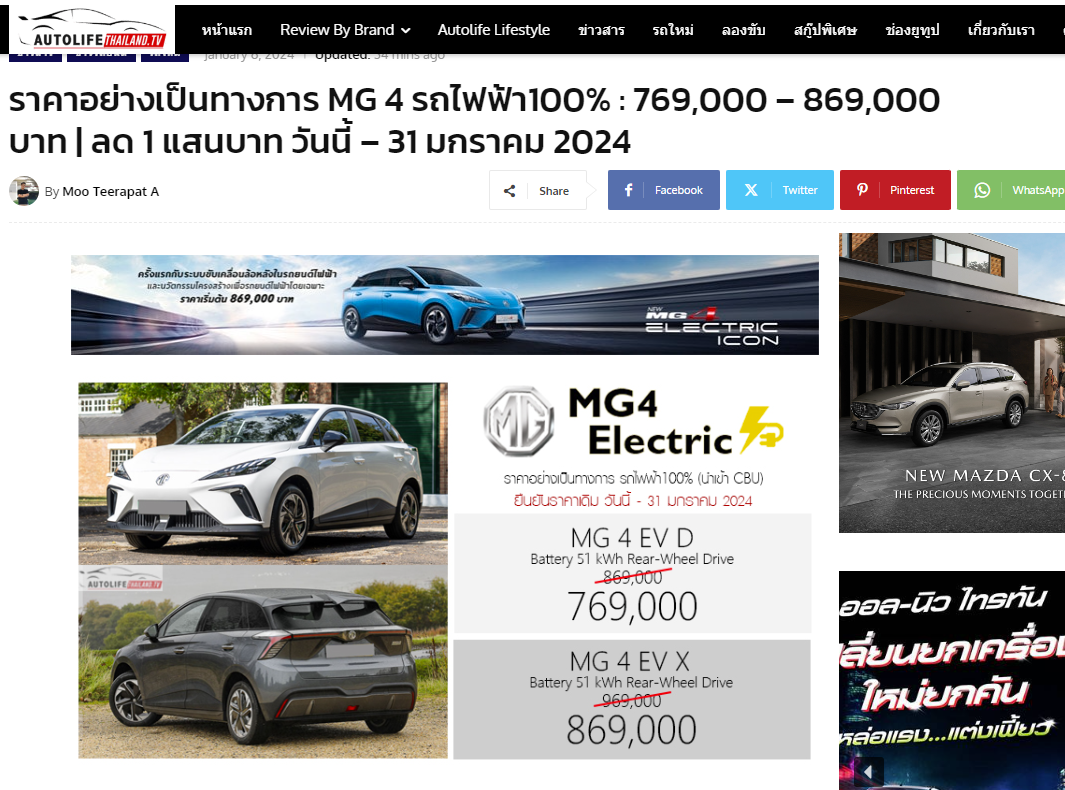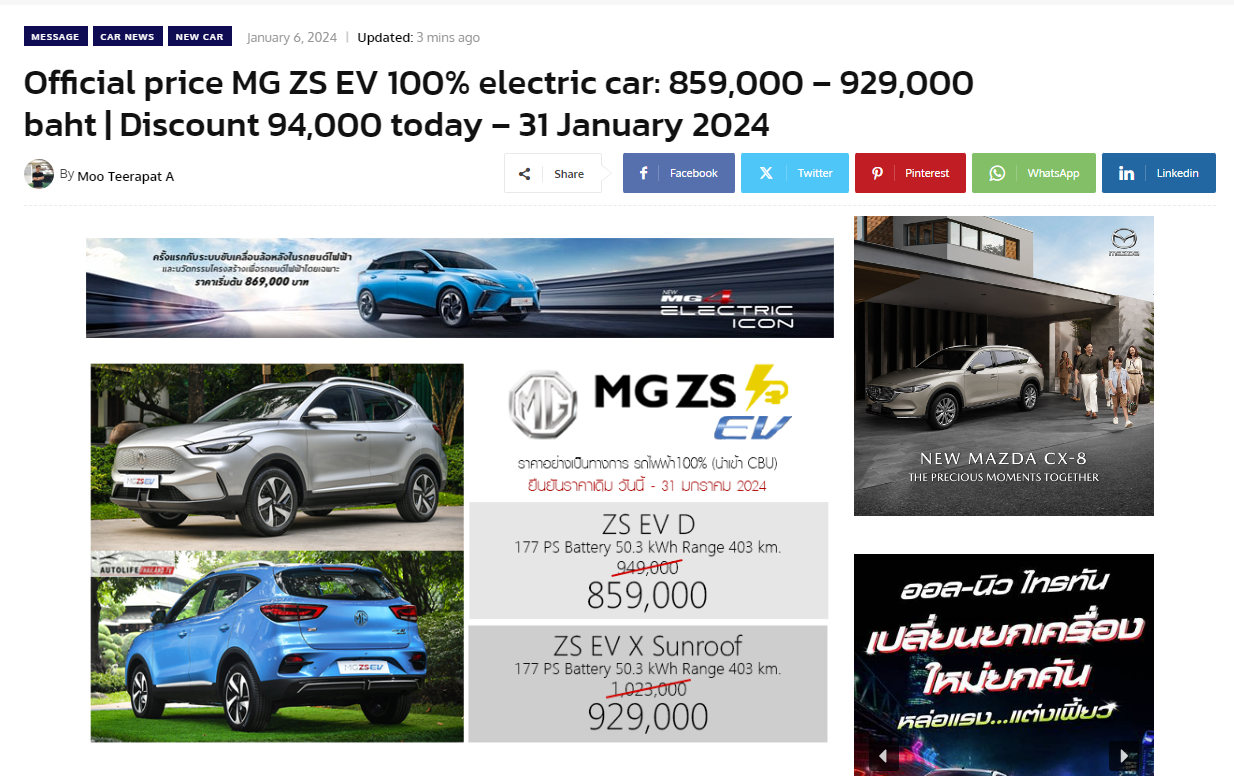-
Posts
29,077 -
Joined
-
Last visited
Content Type
Events
Forums
Downloads
Quizzes
Gallery
Blogs
Everything posted by Pib
-
Did you change the input voltage? I see the ABB app shows 32A being allowed thru to the EV equating to 7.5KW power output (voltage not shown) in above picture, but your earlier post with an app picture also showing 32A being pushed but the output was only 7.3KW.
-
You "might" get a little bit based on the P=IE formula....but the Seal onboard charger and the standard communications between the EV and wallcharger may just keep the max charge level at 6.5KW. Remember, it's the vehicles onboard charger that determines how many amps is being drawn from the wallcharger although the wallcharger will set a "max" that it will allow before cutting off all charging. And the way that communications works it "typically" asking for specific amperage levels like please feed me 30A, feed me 16A, feed me 10A, etc., regardless of the voltage level of 220V, 230V, etc. As long as the Seal onboard charger is receiving more than enough input voltage and amperage to power the onboard "rectification" process of converting the AC to DC then it may internally limit how much AC power is rectified to DC power keeping the max charging at 6.5KW.
-
I do not have an ABB charger; I have a BYD-provided ZHIDA wallcharger which came with my Atto. No menus/screens to look at with this charger....no app...this fancy light switch is activated on and off by waving a RFID card in front of it. And yes, although I used the "fancy wall switch" phrase a lot in my earlier post I also said it's also serving as a safety device to now allow more than a certain amount of amperage to be drawn. Like if something goes wrong and the EV starts asking say 45A (or more) out of your 32A (nominal 7KW) wallcharger the charger will simply turn off charging like a light switch turning off a light. And that fancy light switch/safety device will probably react faster than the 40A circuit breaker box right next to it.....and also faster than the 40A circuit breaker in your home main circuit panel if your charger goes to the main circuit plan versus maybe going to it's own separate electric meter like maybe a separate TOU meter. Regarding a Taycan with 22KW or 11KW onboard charger, a 22KW or 11KW onboard charger is a 3 phase charger (vs single phase) and in order to receive that full 22KW wattage it needs to be fed by a 3 phase wallcharger. A 3 phase 22KW wallcharger will feed approx 7.2KW on each of its three phases/lines (L1, L2, and L3) feeding into the EV which totals up to approx 22KW. A 3 phase 11KW charger will feed approx 3.6KW on each of its three phases/lines into the EV which totals up to approx 11KW. And as you said if you plug a single phase 7KW charger to a Taycan which has a 22KW or 11KW onboard charger the wallecharger charger only feeds 7KW via it's L1 line (as it does not have L2 and L3 lines) to the EV onboard charger. Actually we shouldn't even be using the terms "wall charger, portable charger" because they are not really chargers as they are "Electric Vehicle Supply Equipment (EVSE)" according to EV charging standards/regulations. All they really do is safely "supply" the AC voltage to the EV and do not change the AC voltage level, convert AC to DC, or anything like that....the EV onboard charger is the only charger in the setup...that's where the AC is converted to DC to charge the EV battery. Wall or portable EV chargers (whoops, I mean EVSE) are simply "fancy light switches, fancy circuits breakers, may come with fancy apps and Wifi connection, etc....and the more expensive ones may allow you to select a certain max amps output like maybe having a 7.2KW/32A wallcharger but you need to hooked it up your home wiring which can only handle say 3.6KW/16A and want the wall charger to limit power down to 3.6KW max.
-
Thanks. As mentioned earlier I'm going to get a new smartphone in the near future. And when it comes to activating the mbanking app on the new phone it use to be ready straight forward in Thailand...even have the mbanking app could activated on multiple devices. But now that Thai bank mbanking can only be on one phone I was simply unsure if I needed to go into that menu area in the Bangkok Bank mbanking app and "first" delete my current device which will kill my mbanking until I can activate mbanking again on the new phone. And with my luck I figured one of Murphy's Laws would zap me to where when trying to activate the mbanking app on the new phone (right after I had deleted the old phone) the app would not activate for some other reason which means I now do not have any mbanking since I had also deactivated mbaning on my old phone. But since the Bangkok Bank mbanking app automatically deactivates the old phone "while activating on the new phone" that should ensure I end up with mbanking at least on the old or new phone. But if during the activation process on the new phone Bangkok Bank "first" deletes the old device before continuing a few milliseconds late with the remaining activation process versus after a new device is successfully activated I guess a person could still end-up with no mbanking if the activation on the new phone fails. Thanks again for the update.
-
And it will be hard to displace the "Yaris ATIV" from the best selling small SUV in Thailand (ICEV or EV) simply due to a low price of Bt549K and most folks still preferring ICE Vehicles although that ICEV-only attitude seems to be changing quickly in Thailand as EV sales in 2023 rocketed. But attitudes about EVs are not changing so quickly in some countries around the world....a lot depends on tax rebates/subsidies, the weather/size/topography of the country, charging infrastructure, political factors, lobbying groups, etc. Each country is quite different....but Thailand seems ready & ripe for EVs. Below from the the Toyota Thailand website showing various Yaris models pricing.
-
Heck, Telsa is now buying BYD Blade Batteries to put in Teslea EVs. Telsa has been in Thailand for at least a year....they are getting around 10% of the total Thailand EV market share...about 1 out of 10 EVs on Thailand roads. I see them all the time in the greater Bangkok area....heck, right on my village soi of 10 homes 3 of the 10 houses/families on the soi have an EV.....two are BYD Atto's and one is Tesla Model Y. All three bought in 2023. I'm one of those Atto owners. Telsa's are on the pricier end of the EV price scale (approx Bt1.6 to 2.3M for a Model 3 or Y) so I expect that's why they don't have a larger market share in Thailand where as most Thailand folks are looking for an EV at around Bt1.2M or a lot less.
-
Although the chart below is shown in the OP's weblink above, for those who are challenged in weblink clicking, I've included it below. Shows the monthly sales Jan-Dec 2023 for each EV model sold. And of all the EV models sold in Thailand for 2023 there was one EV manufacturer who was the 800 pound guerilla, the elephant in the room, etc., among the manufacturers and it was not Telsa....it was BYD commanding 40% of the EV sales in Thailand.
-
It is possible to get 6.3 or 6.4KW, but based on using my wall charger with my Atto for the past 2 months the Atto usually starts off showing 6.0 or 6.1KW.....X-amount of minutes later it climbs to 6.2KW....sometime is shows 6.3KW for X-minutes and just for maybe 1 minute before reaching 100% it climbs to 6.4KW. The only time I see 6.4KW on the Atto monitor is just during the final minute of charge as its finishing the battery balancing/topping up process (BYD calls that "calculating" vs balancing). I would say the great majority of time the Atto is displaying 6.2KW with the wall charger showing 6.85KW being fed in....this equates to a 90.5% charging efficiency. And I do see a 6.3KW a fair amount of time which equates to 92% charging efficiency. It all averages out to about 91% efficiency during a multi-hour charge. Now keep in mind the "7KW" rating of wall chargers is a "nominal" rating....actually they maybe be spec'ed a little higher...maybe up to around 7.6KW but that don't mean it will ever put-out 7.6KW because the communications between the EV and Wallcharger will be focused on asking for a certain "amperage level" and the EV typically asks for 30A....not 29A...not 31A....but 30A from a 7KW charger. P=IE...that is Power = Current (amps) times Voltage. So 30A times 220V = 6.6KW...but actually your line voltage may be 230V....so, 230 times 30 = 6.9KW. Or maybe your local lines voltage is 240....then 30 times 240 = 7.2KW. And when I say the EV asked for 30A that don't mean exactly 30A might be allowed but maybe somewhere from 29 to 31A....your EV is controlling the actual amperage draw. And of course your local line voltage might be 210V, 218V, 227, 235, etc...etc...etc....lord knows line voltage varies a far amount in many parts of Thailand. The Wallcharger itself is nothing more than a "fancy light switch" that either lets the AC amperage thru it to the EV or cuts it off. Other than the Wallcharger telling the EV the max amperage it can allow thru it, like 30A, 16A, etc.) it's the EV that determines the exact amount of current being drawn....the wall charger is only serving as a "safety device, fancy light switch" to not allow more than a certain amount of amperage to be drawn. To know how much power your wall charger is actually feeding to your EV you need to have an AC wattmeter monitoring the KW output/voltage/amps. I have such a wattmeter hooked up...and the maximum power it every feeds to the Atto is 6.85KW because my local voltage is approx 225V and around 30.5A is being fed to the Atto....225V times 30.5A = 6.86KW. But sometimes I see a lower amperage level being drawn...like exactly 30A...the EV is controlling the exact amount being drawn....the Wallcharger is only standing guard to ensure it don't draw too much amperage which would cause the wallcharger to stop allowing any power to be fed to the EV...the wallcharger acts like a light switch. Power on or power off. And due to charging losses all of that 6.85KW will not make it into the battery, but some of it (around 8 to 10%) will be loss in the EV onboard rectifier (i.e., AC being converted to DC, components heating, cable heating, EV electronics using some of the charging power, etc). Yeap, seeing a charge rate of around 6.0 to 6.3KW is all you probably ever see with the exception of a brief 6.4KW just before reaching 100% and the EV shutting down the charging because it's battery is full. Edit: pic of the AC wattmeter I added to my wall charger setup....it monitors the power/voltage/amps on the wallcharger output....the EV input.
-
There is nothing wrong with your hookup regarding charging loss. A good 7KW wall charger paired with a good onboard rectified in your EV will have around a 90 to 92% charging efficiency with the great bulk of the charging loss occurring "within the EV...at it's rectifier...associated EV electronics while charging, etc." The Seal, Atto, and Dolphin sold in Thailand have a 7K single phase onboard rectifier (I read that some models sold in some European countries have a 3 phase 11KW onboard rectifier). With my 7KW wall charger and my Atto I get a charging efficiency ranging from 90 to 92% primarily depending on the outside temperature at time of charging.
-
The Dolphin was the champion just for the months Sep-Dec...right after it was released a few months earlier. But for the whole year the sales champion was the BYD Atto 3. However, I do expect the Dolphin to continue to lead in monthly sales for X-amount more months....do pretty much the same thing that the Atto did when it was first released when it was the sales leader month after month. Sales for Jan-Dec https://autolifethailand.tv/register-ev-bev-thailand-dec-2023/
-
Rate Charging Suppliers based on ease of use?
Pib replied to Greenside's topic in Thailand Motor Discussion
Yea...that's the manual method which is pretty easy/fast in itself. But with Autocharge the EV and Charger supposedly make an automatic connection/starts charging without doing any/lot fewer manual steps. In one youtube video it seemed the person just opened the app, plugged the charging cable into the EV, laid the phone on the hood of the car just to emphasize he's not pushing any icons in the app, and after about 30 seconds the charging process automatically started. Next time I'm out in the provinces I will try to give a PEA charger another try to see if Autocharge kicks in since the best I can figure I have the PEA app setup to Autocharge...give the app about a minute...if nothing happens automatically I will use the manual steps/icon pushing. I live in Bangkok where according to the PEA app they only have one charger in the north Bangkok. -
Rate Charging Suppliers based on ease of use?
Pib replied to Greenside's topic in Thailand Motor Discussion
@Gweiloman The PEA app has an "Autocharge" function/setting in the Profile menu which based on the little bit of info I have found on it and one Thai language Youtube video that when you have your EV registered in the app and the Autocharge setting turned on (which I do), when you plug in your EV you don't have to go thru various steps in the app to get a charge session going....it just starts by itself after about 30 seconds of your EV and charger establishing a link. As far as I know being registered in the app just means you have completed the app registration entries which I have done. Now when doing my very first use of a PEA charger probably around 2 months ago at the very end of that process a pop-up menu displayed asking me if I wanted to setup AutoCharge but since it asked me that question out of the blue on my first use of the app/charger and at that time I didn't know what AutoCharge was so I just hit cancel to make that popup menu/message go away so I could complete the very final step of finishing the charging session. Plus I still had my red tags so I couldn't even enter my Vehicle Registration License Plates (white) number since I didn't have my white plates yet...still running red plates and I just had 12345 entered in my Profile for a license plate number. As as far I know entering your license plate number is optional. Now I have used the PEA app a 2nd time about a month ago and the AutoCharge setting was turned on during that 2nd use...and I'm not sure if I still had my red plates at that time....but the Autocharge function don't seem to work for me although I have the Autocharge function turned on and now have white plates license entered. Maybe the problem is I'm not waiting long enough....maybe the Autocharge will work and I'm just not waiting longer enough...maybe a person has to wait 30 or more seconds as the EV and charger communicate with each other. On my next PEA charger use I will wait longer...maybe up to a minute to see if the Autocharge kicks in. But if it does take that long to work "Automatically" I think I would just instead click the app settings manually to get the charging session started sooner versus waiting for the Autocharge communications to kick-in. And maybe the Autocharge only works if you have a RFID card registered in the app....but I don't think this is the situation based on what little info I have found on the subject, that youtube video, etc. Yea, just wondering if Autocharge works for you? If it does how long does it take to kick-in, any special steps a person must follow, etc. Thanks. Edit: I found another Thai language video where they talk a little about the Autocharge regristration process and apparently all you need to do is to have your license plate number entered and the Autocharge setting turned on....see last snapshot where they started to enter the car license plate number. Snapshot from my PEA Volta Profile Menu -
One more question, for a retired person whose total income now comes from pensions, savings, investments, etc., with no income from work/employment do they submit a Form 90 or 91. In the example given a few posts up an example Form 91 is being used but that seems to conflict with below webpage. And to top it off both the form 90 and 91 use the Pension word on it causing more confusion in my pea brain. https://www.rsm.global/thailand/insights/rsm-focus/filing-pnd90-and-pnd91#:~:text=PND 90 and PND 91,using the PND 91 Form.
-
Well, what I meant by a joint return is where both you and spouse are submitting one tax return where both of you declare your income. Yesterday I tried to walk myself thru completing a joint return and that 190K exemption seemed to be total for a return vs 190K for each person, but I was completely unsure when the dust settled...figured I'd let is lay a day or two and look at it again.
-
Rate Charging Suppliers based on ease of use?
Pib replied to Greenside's topic in Thailand Motor Discussion
No sweat. On a worldwide basis the average EV battery size is around 70KWH when considering full size and compact vehicles the typical person drives around. See below EV Database webpage. https://ev-database.org/cheatsheet/useable-battery-capacity-electric-car Now a vehicle with a 400KWH battery would be some commercial vehicle like an electric bus that drives around town all day, all night like the blue electric buses here in Bangkok....maybe some construction trucks/special purpose vehicles.....not something you or me would be driving. Cheers. -
Rate Charging Suppliers based on ease of use?
Pib replied to Greenside's topic in Thailand Motor Discussion
Don't know what kind of math you are using but let's say I needed to fully charge my BYD Atto which has a 60KWH battery which gives me approx 480Km of range. Most BEV's running around Thailand right now have batteries in the 40-80KWH ballpark...with the great majority being around 60KWH. OK, my battery is flat/0% charge left when I pull-up to the Atervim charger. The charger is going to have to pump 60KWH worth of electric fuel into my Atto to fill it up to 100% charge. At Bt7.5 per KWH and 60KWH being pumped into my battery to fill it up then 7.5 times 60 = Bt450....add on 7% VAT and the total charge would by Bt481.50. Well, actually due to charging losses it will actually pump a little more than 60KWH to fill-up the battery...maybe even up to 65KWH....but let's not complicate the math right now with that. OK, I'm good for another 480Km of driving....but driving 480Km in my Toyota Fortuner 3.0L Diesel costs me Bt2.88/Km in diesel full cost (inc VAT)......2.88 times 480 = Bt1,382.40 in diesel fuel costs which is almost three times as much as the Bt481.50 in electric fuel costs from that DC Fast Charger which was charging they typical Bt7.5 per KWH off peak rate here in Thailand....and if it had been a charger using an off peak rate of Bt4.5 per KWH then my electric fuel cost would have only been Bt288.90 vsBt481.50 which is almost 5 times cheaper per Km driven. Total time to accomplish the DC Fast Charger would be approx 1 hour. I guess a person could go stay in a hotel for that 1 hour (hopefully the hotel have short-time rate vs only an overnight rate) while the EV is charging....I'm pretty sure a 1 hour stay at a hotel would be less than a overnight stay at Bt3,000. But seriously, in "some" countries/locales where they have VERY HIGH electricity rates (for home, business, and EV charger use) but the petrol/diesel fuel costs are not so high then in some cases use of a DC Fast Charger might not save you much money on a trip. But here is Thailand and most countries electricity rates are much cheaper than petrol/diesel fuel costs and a long trip using DC Fast Chargers will still be a lot cheaper than driving a petrol/diesel ICE vehicle. -
Rate Charging Suppliers based on ease of use?
Pib replied to Greenside's topic in Thailand Motor Discussion
Use instructions on Altervim Chargers. But it's a little detailed/involved when actually using the Altervim app....but not much more involved...very simple to use. Edit: almost forgot, the "charger itself" has a pretty clear and large display screen where you can check current charge details (or just look at the app...but there are more details given on the charger screen itself). You can select Thai or English language by the icon at the top right of the screen. Altervim DC Fast Charger (150KW)....both connectors in use (one hooked to by my Atto...and I was getting an 80KWH charge rate (max charge rate for my Atto is 88KWH) Altervim AC Type 2 (11KW) Charger. -
Rate Charging Suppliers based on ease of use?
Pib replied to Greenside's topic in Thailand Motor Discussion
No on and off peak rate pricing; just a flat Bt7.50 per KWH for DC Fast Charging (a.k.a., Super Charge) and AC charging (a.k.a. Normal Charge) Bt60 per hour. And then throw the 7% VAT on top. Below snapshot is from the app. -
MG also reduces price thru 31 Jan 2024 on it's MG4 Electric models. https://autolifethailand.tv/official-price-jan2024-mg-4-ev-bev/
-
EV price reductions (competition) continues. MG drops it's ZS EV prices thru at least 31 Jan 2024. https://autolifethailand.tv/official-price-jan2024-mg-zs-ev-bev/



